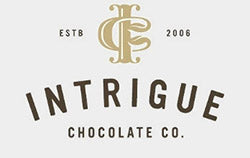Free Shipping on all orders of $65 or more!
Free Shipping on all orders of $65 or more!
$14.00 USD
These chunks of craft chocolate are perfect for your favorite baking projects. Untempered craft chocolate chunks can be chopped up (stir it in like chips), melted down (whisk it in), or use your own tempering skills to make it shiny (dip, dunk, or pour).
Choose from our list of flavors, origins, and cacao percentages. Come back often as these will keep changing!
Ecuador 60%
Origin: Ecuador Esmeraldas
Ingredients: Roasted cacao nibs, raw cane sugar, cocoa butter.
Weight: 8oz
Tanzania 60%
Origin: Tanzania Kokoa Kamili
Ingredients: Roasted cacao nibs, raw cane sugar, cocoa butter.
Weight: 8oz
Cinnamon
60% cacao
Origin: Ecuador Esmeraldas
Ingredients: Roasted cacao nibs, raw cane sugar, cocoa butter, cinnamon.
Weight: 8oz
Vanilla & Sea Salt
60% cacao
Origin: Uganda Semuliki
Ingredients: Roasted cacao nibs, raw cane sugar, cocoa butter, vanilla beans, sea salt.
Weight: 8oz
_________
For your reference when choosing chocolate for your recipes, the FDA defines these common baking chocolate types:
White Chocolate
≥ 20% of cocoa butter (cacao fat).
< 14% of milk solids.
≤ 55% sugar.
Milk Chocolate
≥ 10% of chocolate liquor (cacao nibs).
≥ 12% of milk solids.
Sweet Chocolate
≥ 15% of chocolate liquor (cacao nibs).
< 12% of milk solids.
Semisweet & Bittersweet Chocolate*
≥ 35% of chocolate liquor (cacao nibs).
< 12% of milk solids.
*Semisweet and bittersweet chocolate have the same legal definition. In practice, semisweet chips are often considered to be about 40%, and bittersweet chips to be around 60%. For this category, it’s all about marketing, so it pays to read the label for more information.
Dark Chocolate
There is no legal definition for dark chocolate! So let’s break it down into how the word is used.
From the Blog:
Sipping Chocolate: An Indulgence of Flavor
Dark Chocolate Tart with Pistachios and Pomegranate Seeds
Deconstructed Sipping Chocolate
Chocolate on Toast
Sous Vide Chocolate Custard
Dark Chocolate Chia Pudding
Chocolate Pots de Creme
Chocolate Strawberry & Crepes
Chocolate Ganache 101
Sipping Chocolate Shooters
Mini Dark Chocolate No-Bake Cheesecakes
